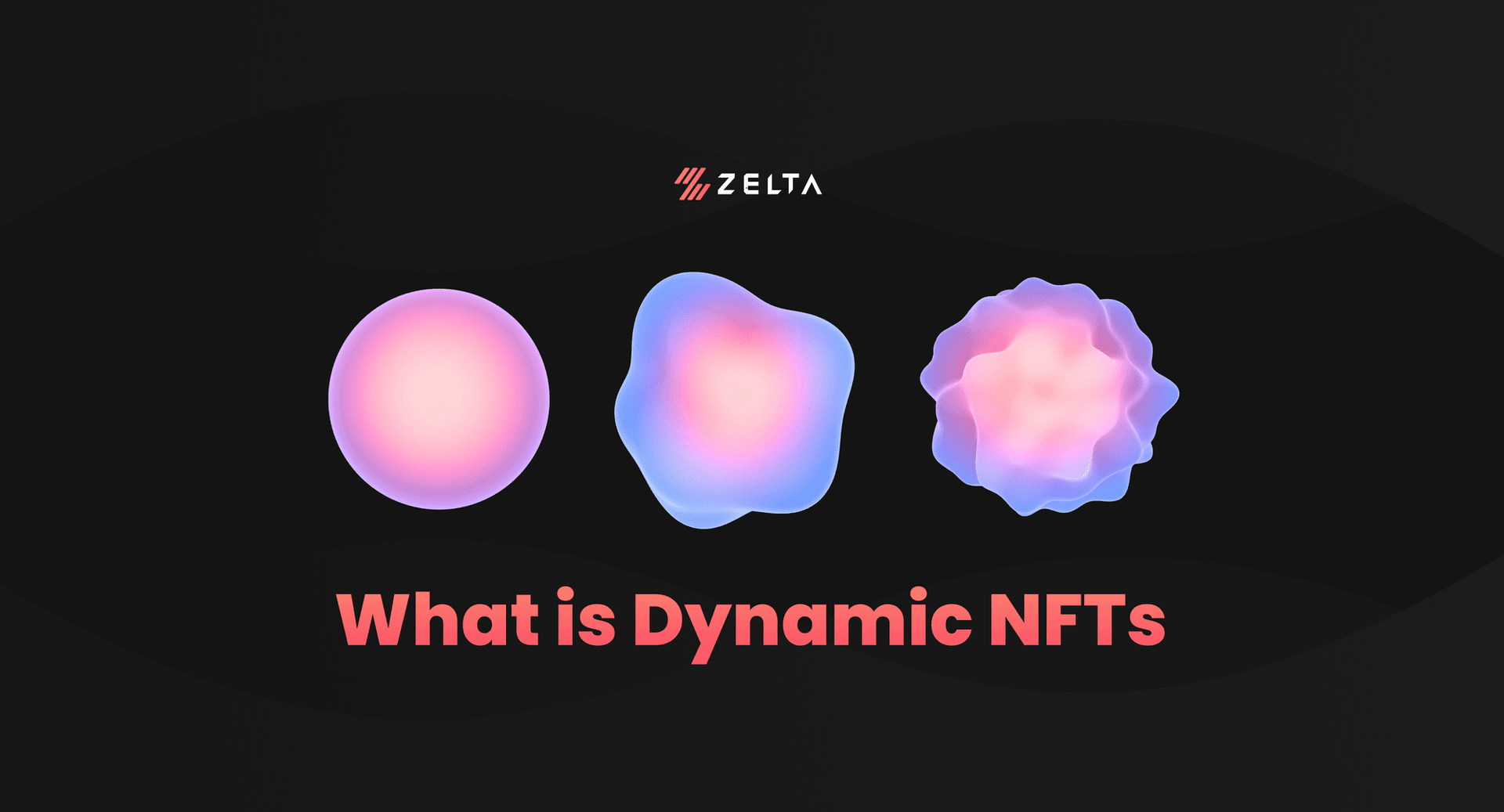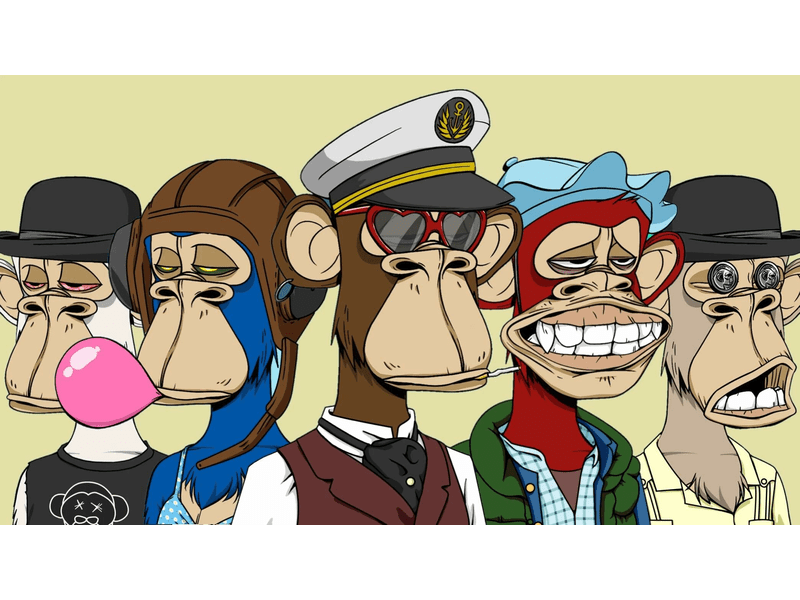

What Is a Dynamic NFT (dNFT)? A Beginners Guide by Zelta
An NFT is a Non-Fungible Token or a digital token stored on the blockchain. Every NFT is unique and the legitimate owner can be found easily via blockchain.
To know how NFTs work read more in detail about “What is an NFT?”
Types of NFTs
NFTs can take many forms, encompassing images, videos, sounds, sketches, paintings, and more. They are broadly categorized into two main types: Static NFTs and Dynamic NFTs.
Dynamic NFTs (dNFTs) Explained:
Dynamic NFTs, on the other hand, are 'dynamic' by design. These tokens can adapt and change their metadata in response to external conditions or real-world events.
Imagine owning a dynamic NFT that represents a football match scorecard. As the game progresses and goals are scored, the scorecard's values change in real-time.
This dynamic behavior is achieved through the use of smart contracts. Smart contracts are digital, automated codes running on a blockchain. They execute when specific conditions are met, and their decentralized nature ensures trust, security, and transparency.

A dynamic NFT's metadata transformation is triggered by external factors, and smart contracts are at the core of this functionality.
These contracts process requests for NFT tokens' Uniform Resource Identifiers (URIs). The process involves gathering and evaluating both on-chain and off-chain data, ultimately resulting in the updated dynamic NFT.
The power of dNFTs lies in their ability to adapt, making them ideal for applications where data needs to change in real-time based on external influences.
Static NFTs Explained:
Static NFTs are, as the name suggests, static in nature. While they are non-fungible like all NFTs, their metadata remains fixed once created. Static NFTs are commonly used for artworks, photographs, sketches, and similar digital assets.

These tokens are bound by a fixed smart contract, and their metadata remains unchanged regardless of external conditions or events.
For example, if you own a static NFT featuring a photograph of a sunset at a specific location, that photograph will remain the same on all devices, even if the location ceases to exist.
Static NFTs are straightforward and unaltered by external influences, making them suitable for various applications. Crypto Punks is a notable example of static NFTs.
Creating Static NFTs:
Creating a static NFT involves choosing a blockchain (Ethereum, Polygon, Solana, Avalanche, etc.), uploading the digital asset to a marketplace, defining its traits, setting a price, and publishing it.
Once published, the NFT remains on the marketplace until purchased by a buyer.
Smart Contracts in dNFTs:
Smart contracts, the backbone of dNFTs, are coded instructions on a blockchain that activate when predefined conditions are met.
Decentralized Instructions:
These contracts operate on complex mathematical algorithms, ensuring accuracy and efficiency in execution. Being decentralized, they enhance trust, security, and transparency.
Metadata Updates:
In the context of dynamic NFTs, smart contracts are essential for processing metadata changes. External conditions and events inspire these changes, which are incorporated into the smart contract.
When conditions are met, a request is made to the smart contract to update the NFT's metadata.
This process involves gathering data from both on-chain and off-chain sources, leading to the creation of a newly transformed dynamic NFT.
Conclusion:
Dynamic NFTs represent a revolutionary development in the blockchain and NFT space. Their capacity to adapt and respond to real-world data and events opens up a world of possibilities across various industries.
As technology continues to advance, dynamic NFTs are likely to push the boundaries even further, unlocking new and innovative use cases in the Web3 era.
